This Frankenstein of a vehicle was always going to happen. It all began with the i-MiEV Evolution that ran up Pikes Peak last year, and lessons gained from that car are now practised here. You’re looking at the Mitsubishi Outlander PHEV, or to stretch out its name in full, the Plug-in Hybrid Electric Vehicle. It is the world’s first SUV that fuses EV technologies with 4WD capabilities.
The underlying concept is easy to understand. One could think that the Outlander PHEV is the love child of the i-MiEV and the Lancer Evolution – in that the SUV takes on the characteristics of an EV, with the four-wheel drive system of Mitsubishi’s once-hottest car.
The Outlander PHEV looks like any other current-gen Outlander, save for a few adjustments. But, because we don’t get to see the Outlander often, I’ll run the list down for you. The front upper/middle grille and rear combination LED lamps with clear lenses are specially-designed, while the bumpers and lower body are sprayed in body colour. The machine-polished 18-inch wheels are aluminium, made exclusively for the PHEV, with the exception of the base E trim that seems to be the stripped-out spec.
If you think the Pajero Sport is somewhat large, you’ll also feel the same way about the Outlander. The measurement tape stops at 4,655 mm for length, 1,800 mm for width and 1,680 mm for height, while the wheelbase measures 2,670 mm long. Depending on trim, it weighs between 1,770 kg to 1,820 kg.
Pry open the doors and the first things that greet you are the seats. They are pencilled exclusively for the Outlander PHEV, and upholstered in artificial leather and fabric, with silver stitching. The G Premium Package gets genuine leather, power adjustments and heating. Both seats do hold on to the torso rather well, but goes out of sorts when pushed through tight turns.
Right about now, I should also mention that the E trim does not get the nifty Rockford Fosgate Premium Sound System that’s standard on the G Premium Package and an option for the G Navi Package and G trim levels. Outlander PHEVs fitted with this see six speakers, a subwoofer and a 710 watt, eight-channel amp with a high-end Aereus 32-bit DSP and a Burr-Brown 24-bit D/A converter. Audiophiles should appreciate this, yes?
Let’s continue by looking to the front, where the new crystal-fibre-like dashboard holds the high-contrast meter cluster that now hosts a power meter, which, in turn, displays how much energy is being employed and recharged. Off to the middle, you’ll find an HD LCD multi-information display system that gives you access to the e-Assist, eco-driving support data, route guidance information linked to the satnav and vehicle energy flow data. The ECO Mode you see here comes standard in all Outlander variants, not just the PHEV.
It also becomes the display for the camera, stuck in an odd angle to the bottom of the left-side wing mirror. Now, you might think that it should point behind and that it is used mainly to eliminate the blind spot, but no. The camera points to the front left fender of the vehicle so you can see what’s making the front left tyre feel squishy.
Still on the quirky, there are paddle shifters in here, but it doesn’t work as you’d think. Since this SUV has no gear ratios, the paddle shifters let you select the Outlander’s regenerative braking level. Odd, because the paddle shifters now slow the car down instead of making it go faster. So, the left paddle is used to decrease deceleration, thus taking a longer time to regenerate, as opposed to the right paddle that increases deceleration to cut short regeneration time.
Overall, it isn’t an entirely bad place to be in, the Outlander PHEV. Close the door, and it goes all hushed, save for the whine of the rear motor on the go. The reason being that it is harder to soundproof the boot, compared to the front. Seating position, especially for the driver, is high and it feels very much like other Mitsubishi SUVs.
Instead of being as flat as a sheer cliff, the dashboard contorts itself towards the driver. So, the driver has two air-conditioning vents blowing air into his/her face. Now, depending on the trim, you can have natural light invading the cabin via a sunroof.
Slip the gear to D – the selector lever’s layout mirrors that of the Prius – and you’re ready to go. There are no gear ratios or a CVT unit to rob power away from you. The electricity flows from the battery to both transaxles, and then to the individual motors that are tacked to each axle. Machined to the transaxle is a simple single-speed fixed reduction gear that doesn’t need to do the paperwork to gain momentum. No, it isn’t a transmission in the traditional sense, and it’s not a CVT unit either.
The smaller front motor outputs 60 kW and 137 Nm of torque. The rear, being a larger unit, puts 195 Nm of instant acceleration to the rear wheels, although it shares the 60 kW power rating of the front motor. Supplying power to the motors is a 300 volt, 80-cell lithium-ion battery with a 12 kWh total storage capacity. The package is powerful enough to let the SUV sustain a speed of 120 km/h without needing help from the petrol engine. So, the power flows from the battery to the electric motors to the wheels and it’s a go.
The first and definite thing you’ll notice is the whine of the motor, specifically from the rear, and that’s all. OK, maybe some tyre noise too. But the petrol engine stays gagged and asleep, and will only come alive when there is need to assist the electric motor. Yes, I did say ‘assist the electric motor’; a regular hybrid works the other way round – electric motors assist the petrol engine.
Acceleration is eye-blink instant. All the weight of the mass suddenly seem to disappear. Then, it seems to settle down on an even plane. By now, it’s moving at city speeds, still being powered by electricity alone. And it’s the same up to 120 km/h.
Ah, I’ve almost forgotten to mention the petrol engine. The mill is a 2.0 litre MIVEC engine that produces 118 PS at 4,500 rpm and 186 Nm at 4,500 rpm. The figures don’t matter because the main task of the engine is to recharge the battery when on the go – a setting known as the Series Hybrid Mode.
But when the SUV starts scaling up an incline, the engine kicks to life to ensure the PHEV keeps moving. This is known as the Parallel Hybrid Mode. With all things taken into account, the Outlander PHEV spends most its time being an electric vehicle. Impressive.
The switch from one drive mode to the other – there are three in total – is also quite seamless, to the point I have no idea if the engine has woken up, unless I stand on the go-pedal, at which the engine roars to power. Mitsubishi says that it has built-in a clutch into the front axles that lets the engine come in at whatever speed the SUV is currently moving in. Se, there are no jerks or loss of momentum when the engine joins in the fun.
All things considered, the Outlander PHEV has a plug-in cruising range of 60 km, or 897 km when you add everything up. When driven in the most fuel efficient manner, one can get 67.0 km/l – yes, that number is not a typo. Still, its hybrid fuel efficiency is rated at 18.6 km/l, which is something you cannot pooh-pooh at.
The handling is respectably good – steering inputs are spot on, and its responsiveness is well appreciated. You’ll also feel the weight of the SUV as you nip it into the corner. The only complaint here is that the steering lacks feedback – even so, I’m pushing the car around a race track, so the smooth tarmac does not provide the most accurate litmus paper.
That said, there is some body roll to contend with. This is a tall vehicle after all, in spite of the 30 mm-drop from the conversion from the petrol Outlander to the Outlander PHEV. In fact, the ride has been tuned for plush and quality, both of which I only got a glimpse of in the midst of trying to hit every apex of the Mobara Twin Ring.
Still, it needs to be said that the Outlander PHEV had just recently completed the Asia Cross Country Rally 2013 that ran from Pattaya in Thailand to Pakse in Laos, in its near standard form. Only a roll cage and some reinforcements were added, in compliance to the regulations. So, there’s proof of its capabilities.
Aside from the usual going from Point A to B and rolling over small rodents, the Outlander PHEV also has additional uses. In the boot, which has no space for a spare tyre, you can find a 100 volt AC power supply plug. Fully charged and with the petrol engine recharging the battery, the SUV can produce up to 1,500 watts of 100 volt electricity to ordinary home appliances up to 10 days. It’s something you’d appreciate when out on a picnic or camping.
Versatility, then, is its strongest point. Excellent range, 4WD capability and its potential as a temporary power station make the Outlander PHEV one of the most useful SUVs that ordinary money can buy, and then some. So, when can you really buy one? If the approval process takes as long as the i-MiEV, then we’re likely to see the Outlander PHEV on our shores by 2015. We’re crossing our fingers for an earlier launch date.
Looking to sell your car? Sell it with Carro.



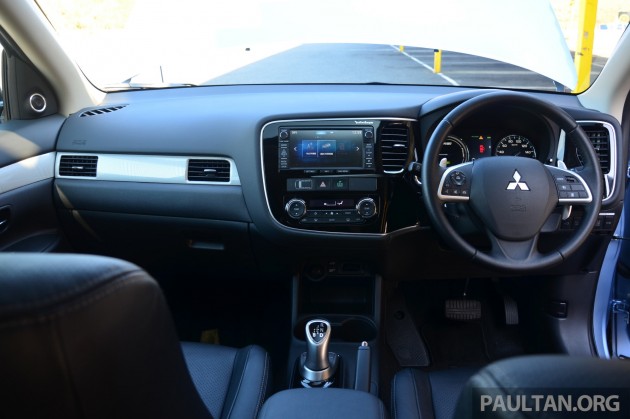



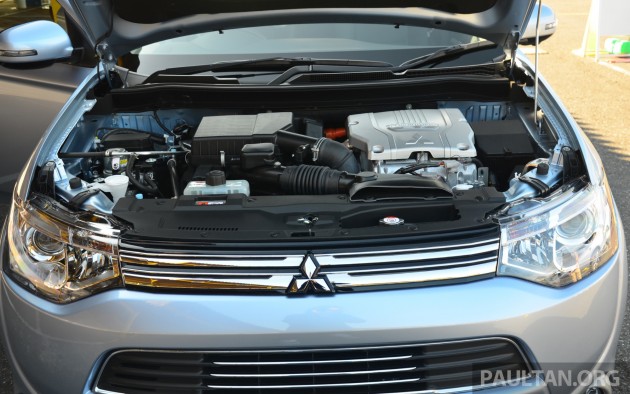
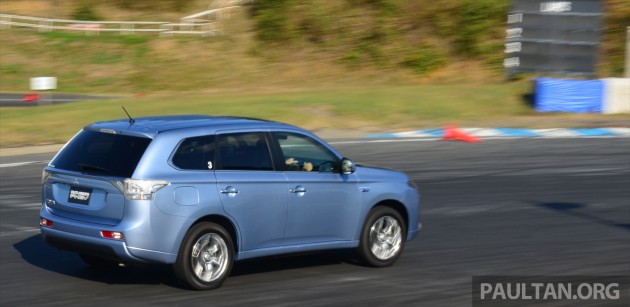



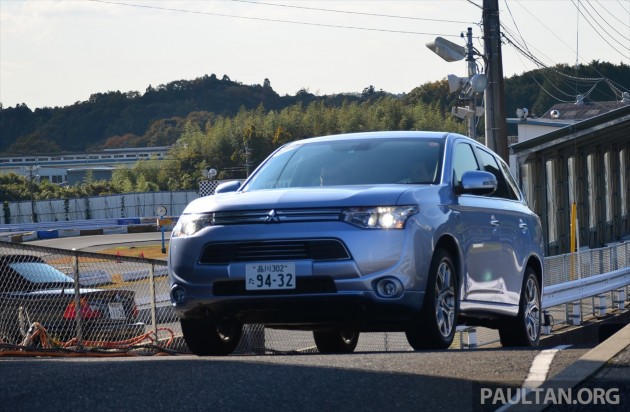
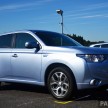
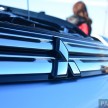
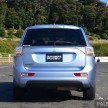
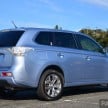
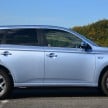
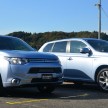


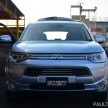
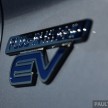
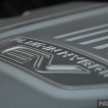
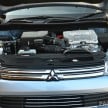

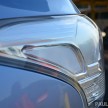
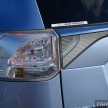
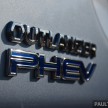
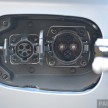
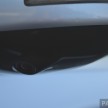
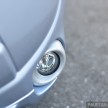
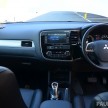
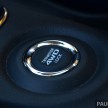
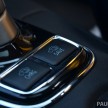
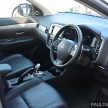
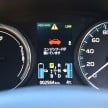
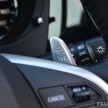
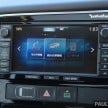
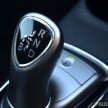
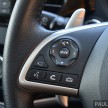
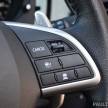
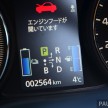


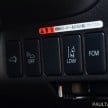
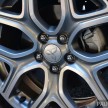
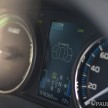


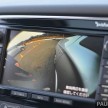
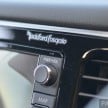
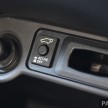

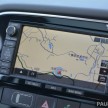
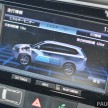
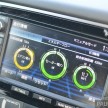

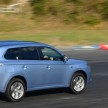

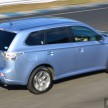
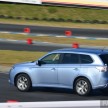




several months back, Mitsubishi Motors Malaysia(MMM) rumored the possibility of introducing this to the Malaysian market by around now. But I guess the halt of production from March to August and the instability of our hybrid/EV pricing system as of now meant that this will definitely be postpone to oh…probably Q3 2014 if I am optimistic.
Being mostly and EV, as well as a high riding SUV means that priced well it can be quite a sucess story in the Malaysian market, considering that it bypass the usual pure-EV problem of ‘range anxiety’. Sure it is far from the most handsome looking SUV(Interior is nice thou) but I’am sure 18.6 km/l is enough to overlook that matter and it has 60km of pure EV range, that is somewhat less than most house-wives do in a day. the EVs 330Nm+ torque can also be really sweet
Back when the rumors of the arrival of this, it was suspected that, due to being a REEV, it could qualify for EV tax-examption, about RM180k-200k if I’am most optimistic.Given that Japan is asking ¥4,297,000 for the highest specs, or about RM161k in todays exchange rate. Mind you pure EVs like the I-Miev is priced fairly closer to what Japanese is asking, ¥3,800,000 (RM125k)in Japan to our RM136k. Just hope the guv don’t backstab their EV ambitions, thou this being Malaysia…..
Looks is a matter of personal preference. Some people may dig it. I personally like the front and the rear is acceptable enough.
Looks like it is set out to be a really sweet ride. The instant 332Nm torque from the electric side is bound to impress. People that do less than 60km a day might never need to refuel on a normal day…just go home and plug-in for a few hours and voila! “I’ve been using this same tank of fuel for over 3 months!”
so electric. such fuel efficient. so mitsubishi. ralli art. makinen likes. wow.
The Outlander looks pretty cool, eh, even in PHEV form. As far as I recall, the normal Outlander doesnt look that exciting. Your photographer must be doing a good job. Wish we can see more of this beauty on Malaysian roads.
Just a question, if the engine supports the electric motor, that means, eventually it’ll run out of gas, so you will need to refuel once in awhile. Does the meters show when you need to refuel, considering it can run quite far just on electricity? Imagine doing 120kmh with no engine sound, only tyre roar and that whine. Quiet eerie, eh?
In terms of drivetrain, in EV mode, does it move as a FWD, RWD or AWD? Or it depends on load? Since rear motors have more torque, would it not feel like a RWD car? Considering it has the EVO’s AWD system, this car could theoretically be a hoon machine, if there is enough torque. Hahah. By the way, how much is the most important specs, ie total power & torque?
By the way, if I recall correctly, an electric motor puts out maximum torque instantaneously. Like an on/off switch. Its like max torque at only 1 rpm (beat that diesel engines), so there is no need for a gearbox/transmission.
There seems to be a fuel gauge
http://paultan.org/2013/11/30/driven-mitsubishi-outlander-phev-tested-japan/mitsubishi_outlander_phev_review_-025/
no need get excited, Mitsubishi borrowed the system from Toyota
Any time better than the boring Toyota design and definitely mitsubishi sales man is much bettrr than those lier like Sam garbage team at Toyota showroom
Did Toyota make a Prius SUV? Even if they did, the Prius isn’t exactly the same as the Outlander PHEV system since it is more of an electric vehicle with secondary petrol engine support than a petrol engine vehicle with secondary electric motor support.
There’s no Prius SUV. However, the Harrier, Lexus RX, US market Highlander, etc are all SUVs and have Toyota Hybrid system.
But if using our lower grade RON95 petrol here, will it affect the FC lower?
For best result this SUV must use RON99 petrol?
Hmmmmm!!!!
For japan spec Outlander PHEV, it uses RON90 (hi-grade, non-plumbum, non-sulfur)
HIDUP PROTON. MITSUBISHI IS CLEARLY COPYING OUR EXORA
in the meantime, they could just introduce the normal, gasoline powered outlander. price above pajero sport and we have a crv contender
in the meantime, they could just introduce the normal outlander(priced higher to avoid eating into the pajero sport sale)
Looks like a brick on wheels…yawn…
Why the dashboard and A-pillar boh ngam? Got gap.
Engine assist motor?.. Good. Car of the future… Oneday make ethanol engine assist motor.. Replaceable energyenergy, oil finish? No problem.. Good job mitsu. Just bring it.
No aura means imposter. . Friends & foes take note.. puiih.
I wonder if the 100V AC power supply plug that comes with the car in the boot that can supply to a normal household 10 day power demand can be adapted for commercial use—-imagine all the power, forget about a picnic, you can even throw a very lit up garden party + music with a charged up 1500 watt of electricity and night market operator will absolutely love that power socket!
Car of the future.. next some other brand will produce diesel engines to power motor.. it ll save more fuel.
a 5 seater or a 7 seater SUV?
can’t believe the review missed it…
It only comes in 5 seater for PHEV
Why won’t they ramp up and get this to the US asap? Seems like they would enjoy being a top seller in a top category. Waiting just means ford, Toyota, gm, even Tesla will catch up and close it off. Mitsubishi brand isn’t a draw here but being the only supplier to a huge demand is a big deal.
There have just arrived in Australia and I’m 98%sold on buying one. I’ve tried to find an ownersw site with feedback on maintenance costs / problems etc. If anyone can find one, especially a Japanese one that translates to English it would be great, as the vehicle has been on the road for a while there. I’ve seen the Dutch site. Great car for us I think
Yeah – just took a test drive the other day in Australia as well. I’m 95% committed at the moment myself. Has a few compromises but the positives certainly outweigh these. We don’t have much choice with EVs or PHEV’s just yet either. I see the Japanese version gets a 110V outlet – I assume an inverter is mounted at the back somewhere and is connected to main drive battery. Pity we can’t get a similar 240V factory system here in Australia. Would be perfect for camping instead of taking a genset. A 12kWh battery could power everything for days and the engine only takes 40 minutes and 3 litres of fuel for a full recharge. A perfect solution to a blackout at home as well.
looks good,power is good but Lancer Evolution will be SUV then…NO